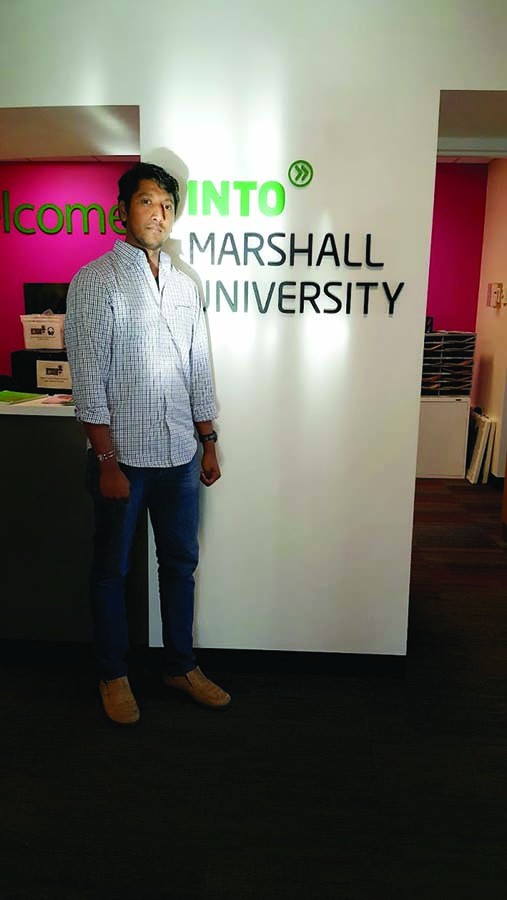#INTOMUviews: Kumar Raj
More stories from Jared Casto
Kumar Raj
By: Jared Casto
Vinay Kumar Raj is a Marshall University INTO student from India currently pursuing a master’s in health informatics.
Raj came to America under the impression it would be far different from his home in Hyderabad. However, he was surprised to find there were many similarities between Huntington and his home.
Raj said he came to America because of the greater job opportunities and pay, but now sees Huntington as much his home as Hyderabad. So far, his favorite experience has been a 1,700 mile trip in the middle of a snow storm in which he visited Pittsburg, Niagara, Cleveland, Lexington, and Cincinnati.
He also participated in the International Film Festival, representing India’s culture and food.
Q: How do you think you have adapted to America?
A: When I moved here, I thought there would be lots of differences between America and India in climate, culture, people and everything. But when I came here, I didn’t feel that much different.
In my city—I’m from Hyderabad, and it’s almost the fourth largest city in India—it has a mix of both the western and Indian cultures. So I have lived in a place where the culture is close to western. (…) Soon after coming here, we made good friends with the Indian community who helped me settle in.
They’re American citizens, Indo-Americans. They made us so comfortable after coming here. They helped us in all ways. After coming here, I didn’t even feel homesick. Hyderabad or Huntington, there’s not much difference between them. Both are one and the same for me. I love this place, actually.
Q: What do you think is the biggest difference between America and India?
A: Food (…) and here we have excellent transportation facilities. People are very good. Everybody helps us. Development is the only difference, otherwise both are one and the same.
Q: How and why did you choose to come to America?
A: For Indian students, especially students who are in science, technology, engineering and mathematics, their major goal is the top Indian institutes. After that, Indian students will aim to come to U.S. because in India we can’t earn much.
When we go to get jobs, we get little money compared to the U.S. with the same skills. A student will (…) come to U.S., pursue his master’s, complete it and then he’ll have excellent job opportunities, make good money and have a good life. So this is the reason Indian students come here, and I too came for the same reason.
Q: What are your plans after graduation?
A: After I graduate, I want to get a job. We’ll have an optional practical training period of almost 27 months. So I would like to get a job, (…) and if I get a local girl to marry, I would like to get married here.
Q: How do you keep in touch with your family?
A: Regularly, I am in touch with my family on the phone, Skype and other video messengers. I’m always in touch with them. At least twice a day I call my parents, my family and my friends.
Q: What has been your favorite experience in America so far?
A: After coming to the U.S., we had a long drive for 1,700 miles continuously. We went from Huntington to Pittsburg, Pittsburg to Niagara, Niagara to Cleveland, Cleveland to Lexington, Lexington to Cincinnati, Cincinnati to Huntington. (…) It was one of my favorite experiences because it was in a winter storm.
Everybody called us and said to us “Don’t drive. Don’t travel.” They warned us and (…) ordered us to return back. But we went. Niagara (…) was an awesome experience. Everyone’s been to Niagara in the spring or summer, but we had a different experience. We saw the frozen Niagara. Luckily we didn’t face any problems.
We drove smoothly, we ate and we had good fun.
Q: What are some activities or hobbies you enjoy?
A: I have participated in the International Film Festival and fashion show.
I have been in the headlines of the Herald Dispatch with my picture.
In the International Festival, we participated on behalf of India. It was a wonderful experience for us because we showed our culture, our food and our costumes.
Your donation will help continue the work of independent student journalism at Marshall University. If you benefit from The Parthenon's free content, please consider making a donation.


